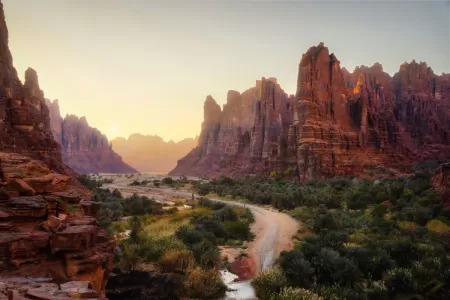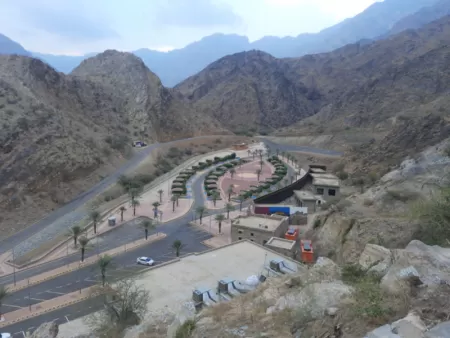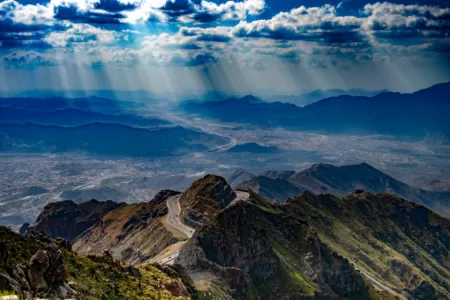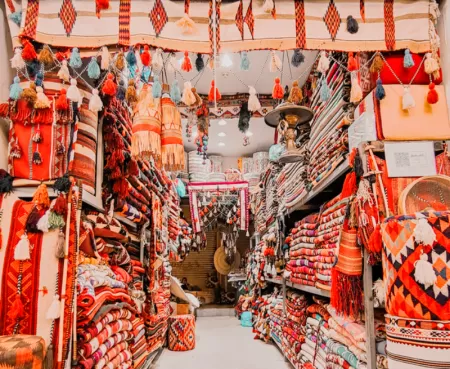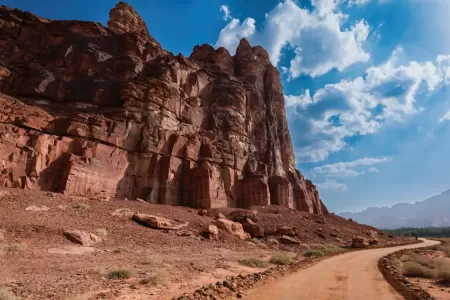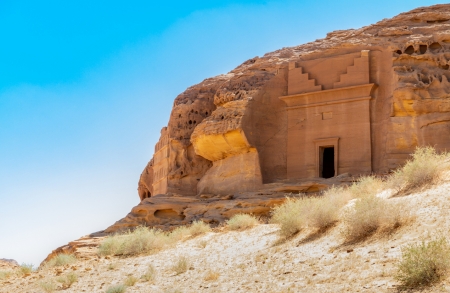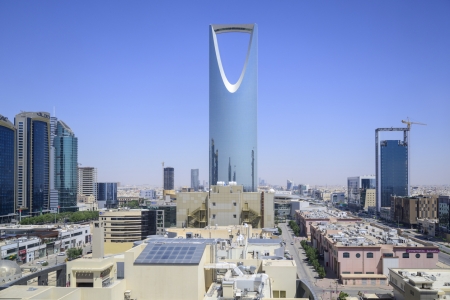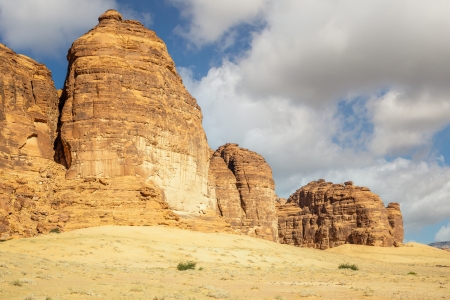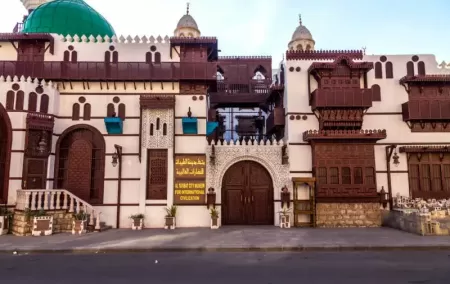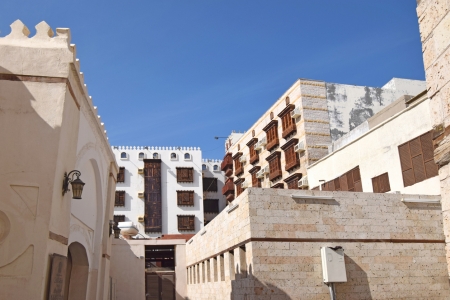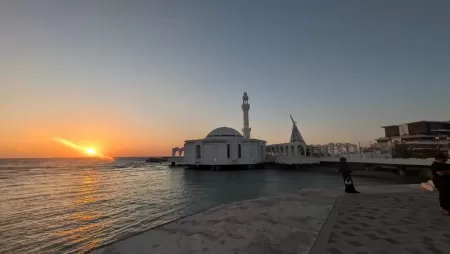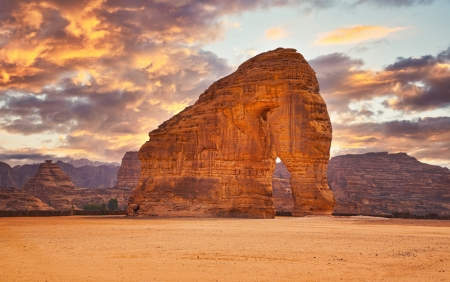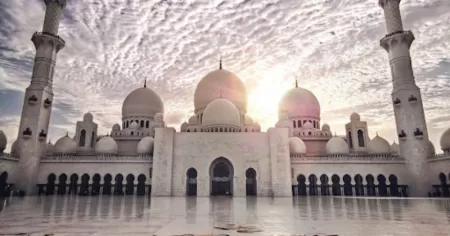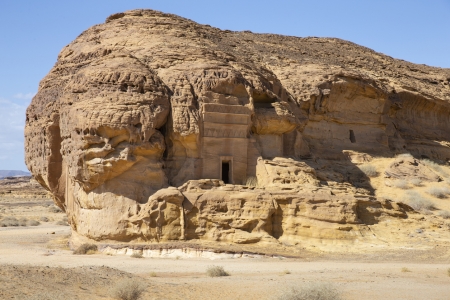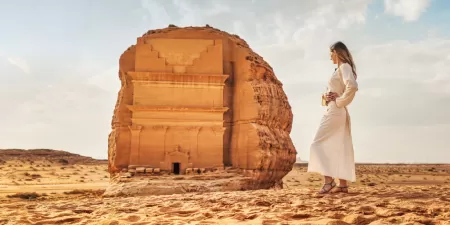Discover Al Baha: Where 53 Forests Meet the Sky
Nestled in Saudi Arabia's Sarawat Mountains, Al Baha, the "Garden of the Hijaz," offers a unique escape with its temperate climate, lush forests, and rich cultural heritage. Explore ancient villages, vibrant festivals, and stunning natural wonders.

The Sarawat Mountains cradle Al Baha at a remarkable elevation of 2,155 meters, where nature has orchestrated a masterpiece of verdant hillsides and temperate air. This mountainous sanctuary earns its poetic title "Garden of the Hijaz" through an extraordinary feat - more than 53 forests embrace the city, creating an emerald jewel within Saudi Arabia's vast landscapes.
Paradoxically, the kingdom's smallest province spans merely 11,000 square kilometers, yet Al Baha unfolds layers of biodiversity and cultural depth that rival regions many times its size. The city shelters 90,515 residents within its mountainous embrace, while the broader province nurtures 339,174 souls, their lineage tracing back to the storied Ghamid and Zahran tribes whose heritage weaves through centuries of Arabian history.
Your exploration of Al Baha reveals architectural marvels like Thee Ain Historic Village, where stone palaces whisper tales of ancient craftsmanship. The Summer Tourism Festival transforms the region into a cultural tapestry, while the International Honey Festival celebrates liquid gold harvested from mountain blossoms. The climate itself beckons - temperatures dancing between 7 and 32.3°C create an oasis of comfort that draws visitors from across the Persian Gulf, seeking refuge from the relentless desert heat that defines much of the Arabian Peninsula.
Geography and Climate of Al Baha
Southwest Saudi Arabia holds Al Baha province within precise coordinates spanning 19°27′17″ to 20°49′75″ N latitude and 40°46′30″ to 42°10′10″ E longitude. This compact territory measures approximately 11,221 square kilometers, positioned strategically between Mecca Province's embrace to the north, west, and southwest, while Asir Province borders its southeastern edge.
Mountainous terrain and elevation
Massive rocky escarpments carve Al Baha's geography into two dramatic sectors, each telling its own geological story. The western expanse unfolds as the Tihamah coastal plain, while the eastern territory rises majestically through the al-As-Sarawat mountain range. These ancient peaks soar between 1,500 to 2,450 meters above sea level, crowned by Mount Uthreb's summit at 2,447 meters southeast of Baljurashi.
Topographical diversity defines every corner of the province. The eastern mountainous realm showcases cliffs and profound valleys, nurturing temperate microclimates where rich vegetation flourishes. Central and eastern territories reveal gentler hills and plateaus, their cooler atmospheres supporting more modest plant communities. Such landscape variety establishes Al Baha's standing among Saudi Arabia's most visually striking regions.
Climate variations between Tihamah and As-Sarah
Two geographical divisions create Al Baha's remarkable climatic contrasts. The As-Sarah mountainous region maintains temperate conditions with annual temperatures spanning 12°C to 23°C. Winter months bring frequent cloud formation and fog as Red Sea air masses sweep inland, often delivering thunderstorms across the highland terrain.
The Tihamah coastal plain, merely 25 kilometers distant, experiences entirely contrasting conditions. Hot desert climate dominates this lower elevation, producing significantly higher temperatures year-round. As-Sarah residents enjoy cool winters and moderate summers, while Tihamah endures hot summers, warm springs, and mild winters.
Precipitation patterns reveal these regional distinctions clearly. Annual rainfall averages 150-200mm, with November's minimal 19mm contrasting sharply against August's peak of 150mm. Humidity fluctuates between 50-70% throughout the year, reaching January's maximum of 61.22% before dropping to June's arid 29.17%.
Best time to visit Al Baha
Optimal weather conditions emerge during specific periods:
- April and May - Spring delivers pleasant temperatures alongside moderate rainfall
- September and October - Early autumn provides comfortable conditions as humidity decreases
Tourism specialists consistently recommend these months for exploring Al Baha's attractions. Outdoor enthusiasts find mid-March through late June, or early August through mid-November, particularly favorable for activities.
Winter visitors (December through February) encounter cooler temperatures between 46°F to 64°F (7.7°C to 17.7°C), while summer travelers (May through September) experience warmer conditions typically ranging 68°F to 85°F (20°C to 29.4°C). Each season creates distinct opportunities - winter hiking through crisp mountain air, or summer appreciation of lush landscapes following August's abundant rains.

Historical and Cultural Background
Centuries of human settlement have etched fascinating stories across Al Baha's mountainous terrain, creating a cultural mosaic where ancient civilizations intersect with enduring Arabian traditions. This highland sanctuary has safeguarded its distinctive character through the resilience of indigenous communities, the strategic importance of historical trade corridors, and architectural marvels that stand as silent witnesses to bygone eras.
Origins of the Ghamid and Zahran tribes
Two remarkable Azd tribes - Ghamid and Zahran - form the cultural backbone of Al Baha's population. Their ancestral roots stretch back to the legendary Mamlakat Saba', which many scholars identify with the Kingdom of Sheba, whose ancient realm once flourished across territories extending to present-day Syria and Lebanon. Historical records suggest these enterprising people established the renowned state of Axum in Abyssinia, demonstrating their far-reaching influence across the Red Sea.
Ghamid stands among the Arabian Peninsula's most ancient and extensive tribal confederations. When Islam emerged, numerous Ghamid warriors joined the early Muslim armies, their courage becoming legendary across the expanding empire. Zahran similarly distinguished itself during the pre-Islamic and Islamic periods, with many tribesmen answering the call to join Prophet Mohammed in Medina.
The celebrated traveler Ibn Battuta (703-779 Hijri) documented how these mountain communities served as vital suppliers to Mecca, their caravans laden with seeds, aromatic honey, succulent raisins, and precious oils. Their cultural contributions resonate today through preserved folklore, melodic traditions, and ceremonial dances that echo through Al Baha's valleys.
Ancient trade routes and mining history
Geography positioned Al Baha along crucial commercial arteries that shaped Arabian commerce for millennia. The historic Darb Al-Feel (Elephant Road) carved its path near this region, connecting the prosperous southern Arabian kingdoms with northern territories during pre-Islamic times. Following Islam's arrival, this ancient highway transformed into a sacred pilgrimage route, carrying countless faithful toward Mecca.
Archaeological discoveries reveal Al Baha's remarkable mining legacy, with evidence pointing to extraction operations dating back to early Islamic civilization. Three precious metals - copper, gold, and silver - were systematically mined from these mountains. The settlement of Asham achieved particular renown, earning mentions in classical Arab geographical texts. These mining operations displayed sophisticated organization, with clear evidence of state oversight and integration into both regional and international trade networks. The industry reached its zenith during the classical Islamic period (c. 630-1100 CE) under Umayyad and early Abbasid rule.
Traditional architecture and qasaba towers
Al Baha's landscape bears the remarkable title "Region of 1001 Towers," earned through its extraordinary collection of qasaba towers that punctuate the mountainous horizon. These imposing stone sentinels were constructed as protective bastions, safeguarding villages, roadways, and agricultural terraces from tribal raids and external threats.
Traditional dwellings showcase ingenious adaptation to mountainous terrain, featuring compact construction with serpentine streets radiating from central courtyards. These multi-story structures typically present minimal openings - few windows and doors - reflecting both defensive considerations and climatic wisdom. Master builders selected materials from their immediate environment: granite, basalt, and marble formed sturdy walls, while indigenous acacia, sidr, tamarisk, and wild olive wood crafted roofs, columns, and doorways.
Across Al Baha's rugged landscape, over 4,000 fortified structures dot the terrain, each sharing similar design principles and construction techniques. This architectural heritage creates one of Arabia's most compelling historical experiences, where every stone tower and ancient dwelling tells stories of communities that thrived in these mountains for generations.
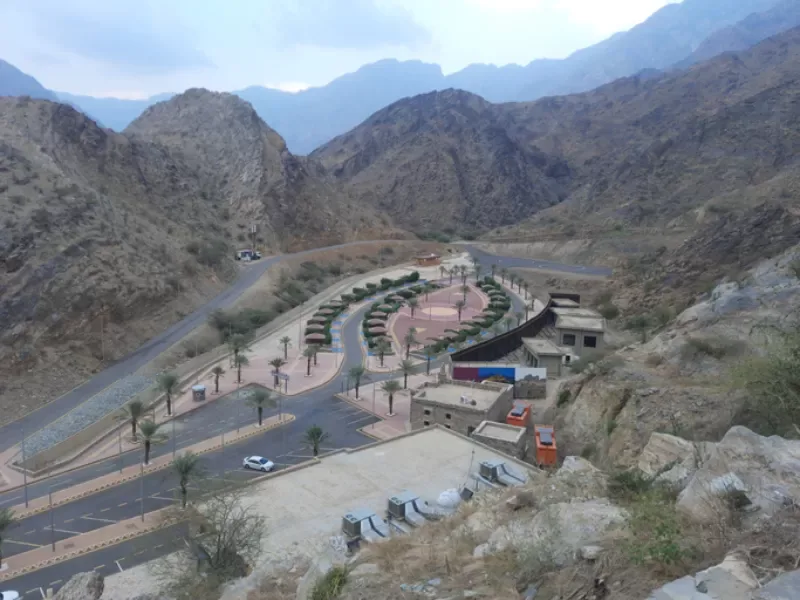
Top Attractions and Things to Do in Al Baha
Al Baha's attractions form a remarkable collection that spans millennia of human settlement and natural evolution. Each destination offers distinct insights into the region's character, from architectural marvels carved from ancient stone to protected ecosystems harboring rare wildlife.
Thee Ain (Marble Village)
Rising from a foundation of gleaming white marble, Thee Ain village presents 49 stone palaces that have stood sentinel since the 8th century. This architectural wonder within Al-Makhwah governorate showcases construction techniques perfected over generations, each structure built from carefully polished local stone. The village's layout follows a precise hierarchy: nine single-story palaces anchor the settlement, while 19 two-story structures, 11 three-story buildings, and 10 four-story palaces create a terraced community ascending the mountainside.
Recent preservation efforts reflect the site's cultural significance—the Saudi Tourism Authority invested 16 million riyals across five years to restore this historical gem. The village continues its agricultural traditions, producing seven tons of bananas annually while cultivating over 32,000 screw pine flowers that perfume the mountain air.
Raghadan Forest and other green spaces
Spanning 600,000 square meters of mountainous terrain, Raghadan Forest demonstrates nature's resilience at 1,700 meters. The forest's juniper trees maintain their verdant canopy throughout the year, creating a perpetual green sanctuary just 5 kilometers west of Al Baha city. Adventure seekers discover multiple elevated experiences:
- Ziplining expeditions (120 SAR per person)
- Aerial cycling pathways and elevated walking trails
- Suspended pedestrian bridge crossings (25 SAR per person)
The forest infrastructure includes dining facilities, recreational zones, children's play areas, and a small zoological collection. Operating from 8:00 AM until midnight daily, the forest welcomes visitors without entrance fees.
Shada Mountain and natural caves
Established as a protected reserve in 2002, Shada Mountain encompasses 68.62 square kilometers of geological history dating back 763 million years. The mountain's peak reaches 2,222 meters above sea level, creating microclimates that support approximately 500 distinct plant species.
This ancient landscape serves as a sanctuary for Arabia's most elusive wildlife—Arabian leopards, wolves, caracals, rock foxes, striped hyenas, and genets navigate the mountain's rugged terrain. Each species represents a living link to the peninsula's ecological past.
Al Zaytouna Farm and local agriculture
Al-Zaytouna Farm stretches across 150,000 square meters of terraced mountainside, where over 4,000 olive trees grow in carefully engineered agricultural plots. The farm's hundred terraces cascade down the slopes, each level representing generations of agricultural knowledge adapted to mountain conditions.
Visitors participate in traditional farming methods, harvest seasonal produce, and taste cuisine prepared using ingredients grown on-site. The farm serves as both a working agricultural operation and an educational center for sustainable mountain farming practices.
Al Baha Summer Festival and Honey Festival
The Al Baha Summer Festival gathers more than 300 family enterprises and skilled artisans, each presenting regional specialties—traditional foods, handwoven textiles, intricate embroidery, and seasonal mountain fruits. The celebration transforms the city into a living museum of regional culture.
The International Honey Festival showcases 25 distinct honey varieties totaling 20 tons of product, representing the mountain's diverse floral ecosystem. Ninety beekeepers from seven countries convene for this gathering, sharing techniques and establishing trade connections that extend Al Baha's reputation for exceptional honey far beyond the kingdom's borders.

Customize Your Dream Vacation!
Get in touch with our local experts for an unforgettable journey.
Plan Your TripModern Life and Infrastructure
Al Baha's evolution into a contemporary hub demonstrates how ancient heritage can coexist with cutting-edge infrastructure. This mountainous province has carefully balanced modernization with cultural preservation, creating essential services that serve both its resident communities and the growing number of visitors drawn to its unique character.
Healthcare and hospitals in Al Baha
The Al Baha Health Cluster operates as a medical network serving more than 303,000 beneficiaries across this mountainous terrain. This healthcare ecosystem encompasses 94 primary care centers working alongside 10 general hospitals and 11 specialized centers, collectively providing 1,245 hospital beds.
Medical services extend across multiple specialties - preventive care, emergency treatment, maternity services, oral care, and family medicine form the foundation of healthcare delivery. Telemedicine technology bridges the geographical challenges of this mountainous region, enabling remote diagnostic and consultation services. Patients who cannot reach hospital facilities receive comprehensive home healthcare services, ensuring medical access regardless of location.
Key medical facilities include Al-Baha Medical Center, Women's Care Medical Complex, and specialized dental facilities such as Miswak Dental Complex. Private healthcare providers supplement the public system, creating a robust medical infrastructure that supports the region's growing population and tourism sector.
Educational institutions and libraries
Al Baha University, established in 2006, anchors the region's educational landscape. The main campus is located in Alaqiq, approximately 25 kilometers from Al Baha city, while satellite campuses serve Almikhwah, Almandaq, and Baljurashi.
Eleven faculties span diverse academic territories - Medicine and Clinical Pharmacy, Engineering, Science, and Arts represent just a portion of the educational offerings. This academic infrastructure directly supports regional development initiatives and provides educational opportunities for local communities.
The Department of Library Affairs, operational since 2008, coordinates university library services. These information centers serve students, researchers, and community members, providing access to diverse knowledge resources that support both academic pursuits and regional research initiatives.
Transportation and Al Baha Domestic Airport
Al-Baha Domestic Airport commenced operations on June 1, 1983, establishing vital connections between this mountainous region and Saudi Arabia's major urban centers. Perched at 5,486 feet (1,672 meters) elevation, the facility features a single asphalt runway measuring 3,350 by 45 meters.
Three airlines - Flyadeal, Flynas, and Saudia - operate regular flights connecting Al Baha with Dammam, Jeddah, and Riyadh. The airport sits approximately 30 kilometers from the city center, requiring 30-40 minutes travel time through the mountainous terrain.
The Public Transport Authority continues developing sustainable transportation services throughout Al Baha region, aligning these efforts with Saudi Arabia's Vision 2030 objectives. These transportation developments ensure that Al Baha's natural beauty and cultural treasures remain accessible while supporting the region's economic growth.
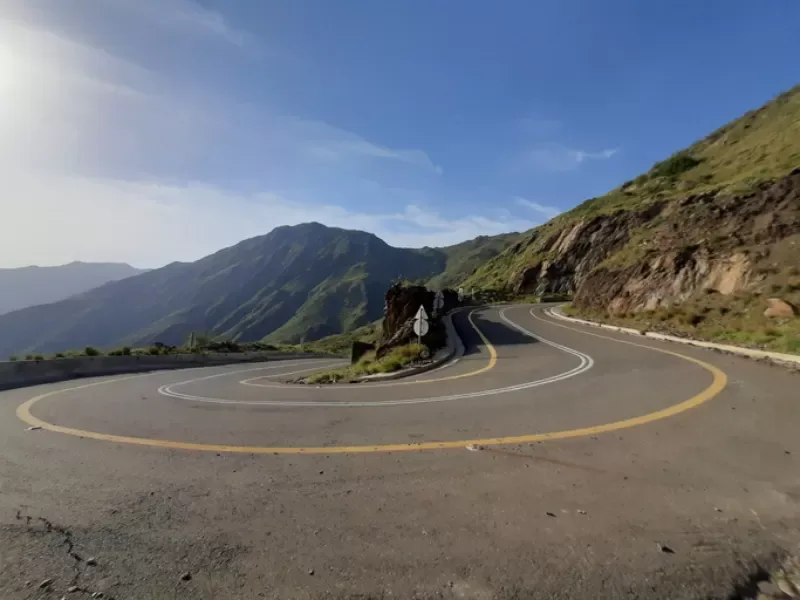
Conclusion
Al Baha emerges from this exploration as a revelation - a geographic anomaly where Saudi Arabia defies its own stereotypes. This mountainous enclave weaves together threads of discovery that few destinations can match: ancient tribal legacies intersecting with ecological abundance, architectural marvels rising from marble foundations, and climatic conditions that transform expectations of Arabian geography.
The region's narrative unfolds across multiple dimensions. Ghamid and Zahran tribal histories stretch back to the legendary Kingdom of Sheba, while mining settlements and trade routes reveal sophisticated economic networks that connected distant civilizations. Stone fortresses and qasaba towers punctuate landscapes where juniper forests thrive at elevations approaching 2,500 meters - a botanical impossibility in most Arabian contexts.
Your journey through Al Baha encompasses experiences that span centuries and ecosystems. Thee Ain's marble palaces demonstrate engineering prowess from the 8th century, while Shada Mountain's 763-million-year geological formations dwarf human timescales entirely. The juxtaposition fascinates: festivals celebrating honey varieties alongside archaeological evidence of ancient copper mining, modern healthcare networks serving communities whose architectural traditions predate Islam.
The province's modern infrastructure supports this layered complexity without diminishing its character. Universities, airports, and medical facilities enable contemporary life while traditional farming terraces continue producing crops as they have for generations. This balance between preservation and progress creates opportunities for authentic cultural immersion rarely found elsewhere in the kingdom.
Al Baha's ultimate gift lies in its capacity to surprise. The kingdom's smallest province contains ecological diversity, historical depth, and cultural richness that many larger regions cannot rival. Here, discovery becomes inevitable - whether through encountering endangered Arabian leopards in protected reserves, witnessing traditional craftsmanship at cultural festivals, or simply experiencing temperatures that make Arabian summers pleasant rather than punishing.
The mountains of Al Baha hold their secrets lightly, revealing them to those curious enough to venture beyond conventional Saudi tourism. Your exploration awaits in this remarkable corner of Arabia, where every elevation change brings new revelations and every stone structure whispers stories of civilizations that understood the value of this extraordinary highland sanctuary.
FAQs
Q1. What makes Al Baha unique among Saudi Arabian destinations?
Al Baha is known for its stunning natural beauty, featuring lush forests, wildlife areas, and mountains. It's often called the "Garden of the Hijaz" due to its verdant landscapes and mild climate, making it a popular retreat for visitors from across Saudi Arabia and the Persian Gulf region.
Q2. When is the best time to visit Al Baha?
The best time to visit Al Baha is during spring (April and May) and early autumn (September and October). These months offer pleasant temperatures and moderate rainfall, ideal for outdoor activities and exploring the region's attractions.
Q3. What are some must-see attractions in Al Baha?
Top attractions in Al Baha include Thee Ain (Marble Village) with its ancient stone palaces, Raghadan Forest for outdoor activities, Shada Mountain Reserve for its unique geology and wildlife, and Al Zaytouna Farm for experiencing local agriculture. The Al Baha Summer Festival and International Honey Festival are also popular events.
Q4. How accessible is Al Baha for tourists?
Al Baha is well-connected with modern infrastructure. It has a domestic airport offering flights to major Saudi cities like Dammam, Jeddah, and Riyadh. The city also has good healthcare facilities, educational institutions, and transportation services, making it comfortable for tourists to visit and explore.
Q5. What is the population of Al Baha?
As of 2022, the total population of Al Baha was 339,174 people. This includes 251,288 Saudi nationals and 87,886 non-Saudis. The city itself has a population of about 90,515 residents, while the larger province accounts for the rest.



